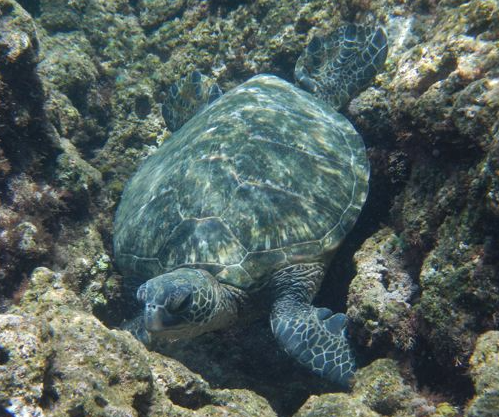Conservationists Propose New Pacific Wide Network of Marine Protected Areas
(New York)— The world’s most critically endangered sea turtle, the Pacific leatherback, will be highlighted this week at the eighth meeting of the United Nations Open-ended Informal Consultative Process on Oceans and the Law of the Sea meeting in New York, as conservation groups call for the UN to implement a new Pacific wide network of Marine Protected Areas in an effort to bring the species back from the brink of extinction.
The plight of the Pacific leatherback rocketed into the spotlight in 2000, when a report published in the scientific journal Nature alerted the world the Pacific leatherback would go extinct in the next 10-30 years if immediate steps were not taken to reduce the impacts on the species, particularly from longline and gillnet fishing. It was estimated 20,000 leatherbacks were caught as bycatch by pelagic longline fishing in the Pacific in 2000 alone.
Over 281 non-governmental organizations from 62 countries and 1,007 scientists from 97 nations have called for the moratorium on longline fishing in the Pacific as an interim measure until such time as permanent marine protected areas can be put into place.
In 2007, seven years on, the Pacific leatherback remains in crisis. “The overall nesting population of the Pacific leatherback has continued to decline,” states Karen Steele, Campaign Coordinator for the Sea Turtle Restoration Project, an international organization dedicated to protecting sea turtles. “This indicates that the current management regimes in place to protect this critically endangered species have been ineffective in reversing the Pacific leatherback’s path towards extinction.”
In 2005 the United Nations General Assembly adopted a resolution urging the use of closures of marine areas to fisheries especially in locations and during periods of high concentrations of sea turtles to enable their recovery. “If immediate action is not taken to implement this resolution it is likely we could see the extinction of the Pacific leatherback in our lifetime,” states Steele.
Conservationists will present a draft framework proposal for the creation of a Leatherback Biological Corridor that will protect leatherbacks with time and area closures from their nesting beaches to their foraging grounds. Specifically, conservation groups are calling for nations to immediately identify critical migratory corridors and habitats areas for the Pacific leatherback, and to implement an international network of Marine Protected Areas to protect this species from fisheries impacts. “Recent satellite tracking of the Pacific leatherback is now providing the scientific data necessary to implement such protections,” states Steele. “All we need now is the political courage to put protections in place.”
Resources:
∑ Review copy of the documentary “Last Journey for the Leatherback?” is available upon request
∑ B-roll video footage is available upon request
∑ The Proposal for a Leatherback Biological Corridor in the Pacific Ocean is available at: downloads/Proposal_for_LB_MPA.pdf
∑ The scientist petition is available at:
downloads/master.UNsciltr10.FINAL.pdf
The NGO petition is available at:
downloads/master.NGOltr.FINAL.pdf
Press packet is available upon request
Photo/Carol Goldberg




